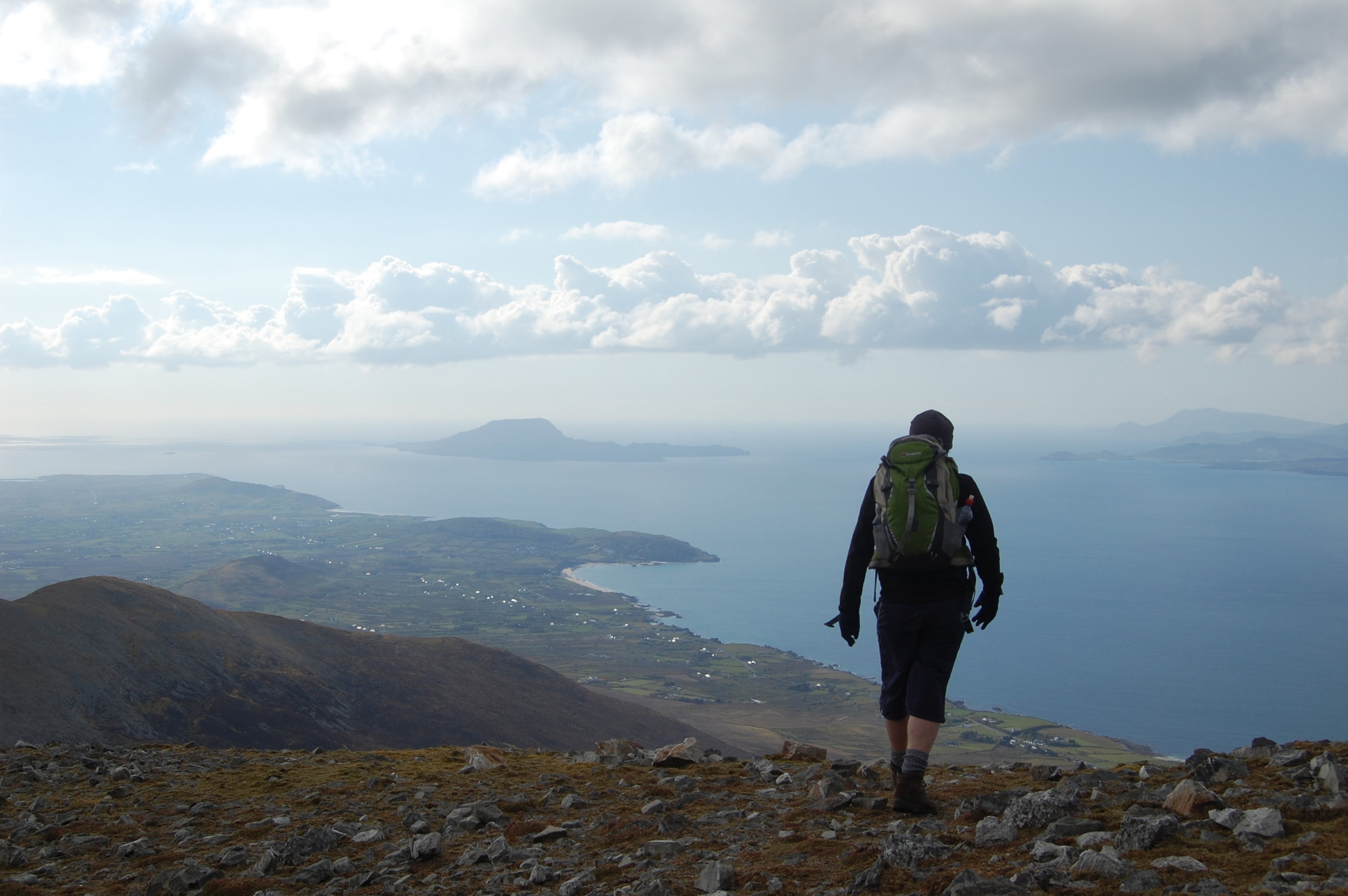Middle ground
/There’s an allure on this Aran island that is hard to grasp, writes LENNY ANTONELLI
Irish Times, 25 August, 2012
DAY TRIPPERS HEAD FOR Inis Mór. Those seeking the road less travelled usually go to Inis Oirr. Few go to Inis Meáin. The island seems happy to keep it that way. The island is, of course, a Gaeltacht island. The academic AJ Hughes wrote that Inis Meáin was one of the only places he “found people who could not speak English” during his travels through the Gaeltacht in the 1990s.
After I got off the ferry, a car with a trailer full of passengers pulled up. “Want a lift?” the driver asked. I had to decline – I was here to walk.
Leaving the pier I went west above the beach, then turned on to a boreen through the labyrinth of stone walls and up to the main settlement. Dozens of five-spot burnet moths, with red spots on black wings, flew around. I headed west on the island’s main road, past JM Synge’s old cottage retreat – open to visitors during the summer – and Dún Chonchúir, a huge hillfort that I had all to myself.
It’s wise to pick up cartographer Tim Robinson’s meticulously drawn map of the islands before you go – it names every cliff, inlet and headland cut from the coast of dark limestone.
The main road climbs and ends where a path through the fields leads to Synge’s Chair, a stone shelter the writer frequented above the cliffs. I turned south here, walking between the patchwork of fields and a huge embankment of shattered limestone that had been cleared from the land.
I climbed over the rocks to find a wide pavement above the black cliffs. Here, on the island’s most desolate corner, you can engage in what Synge called “the wild pastimes of the cliff, and to become a companion of the cormorants and crows”.
Follow the coast south, but watch out: the rock can be slippery, and the cliffs overhang.
The cliffs turn to shoreline after you turn the island’s southwest corner, heading towards the windfarm that powers the island’s desalination plant. The poet Dara Beag Ó Flatharta sees the turbines as enhancing the island’s beauty, like “‘feathers in the hats of ladies at the Galway races”.
Herring gulls patrolled the coast, and the limestone was littered with their handiwork: crushed purple urchins and huge discarded crab legs. I followed a faint trail near the stone walls to avoid the wet rock. No sunshine pierced the clouds, and on days like this in limestone country, the sea, rock and sky bounce greyness off each other.
But there is plenty of colour. Past the windfarm, I turned at a walking marker on to Bóthar na gCreag, a grassy boreen surrounded by green fields splashed with the red, purple, yellow and blue of the wildflowers. I followed the track through a complex of stone walls – some taller than me – and up to the island’s other fort, Dún Fearbhai, just above the main settlement. Then it was time to head back for the ferry.
The allure of Inis Meáin can be difficult to grasp. It is, essentially, a flat grey rock. But when you leave you find yourself being drawn back to the place, almost subconsciously.
Synge found a “tawdry medley of all that is crudest in modern life” back in urban Galway after he left the island. “I have come out . . . to stroll along the edge of Galway Bay and look out in the direction of the islands,” he wrote. “The sort of yearning I feel towards those lonely rocks is indescribably acute.”
Inis Meáin
Start and finish : The pier, Inis Meáin
Distance : About 13km
Time : Four to five hours – maybe too long for a day trip, but you could get a taxi between the pier and the main settlement, and back again.
Suitability : Moderate. Avoid cliffs and remote coast in rough weather. The limestone pavement can be tough underfoot; proceed carefully near the cliffs. Bring a good map, boots, rain gear and plenty of food and water.
Map : Oileáin Arann map, produced by Tim Robinson (Folding Landscapes); OS Ireland, Discovery series, sheet 51.
Route : This is a shorter version of one in Paddy Dillon’s book Irish Coastal Walks. There are also waymarked walks that follow the boreens through the island’s interior.
Food and services : There is a shop, pub, restaurant, cafe and accommodation, but many services are seasonal.




